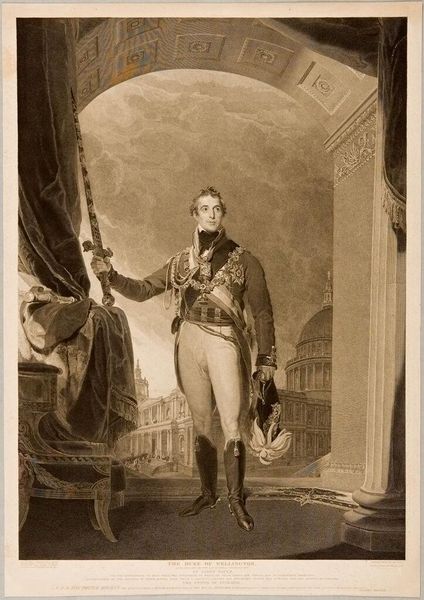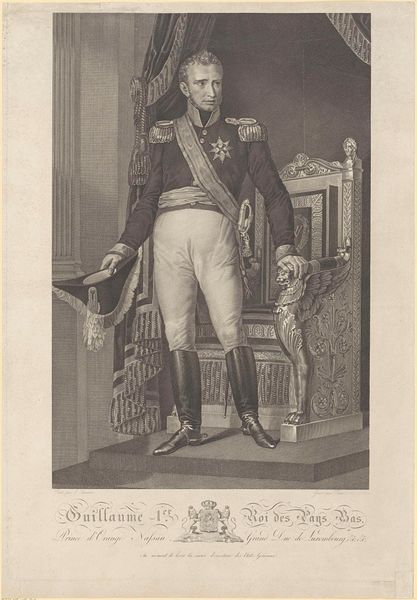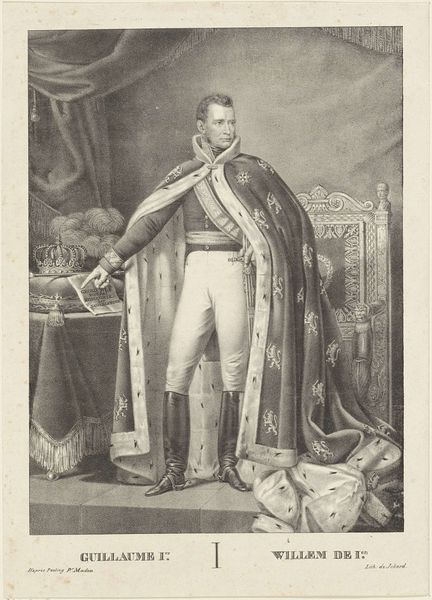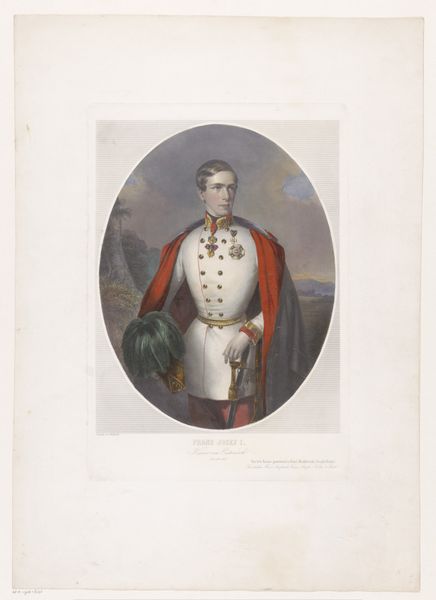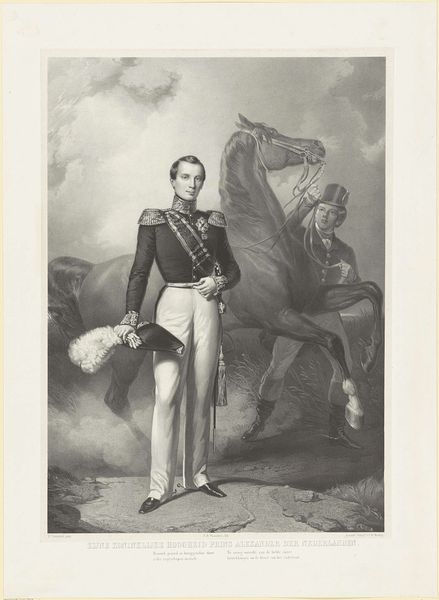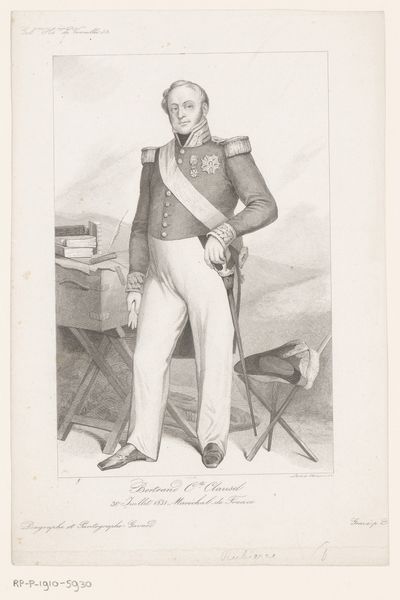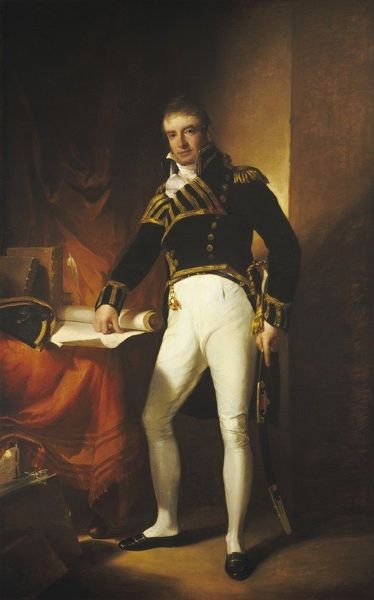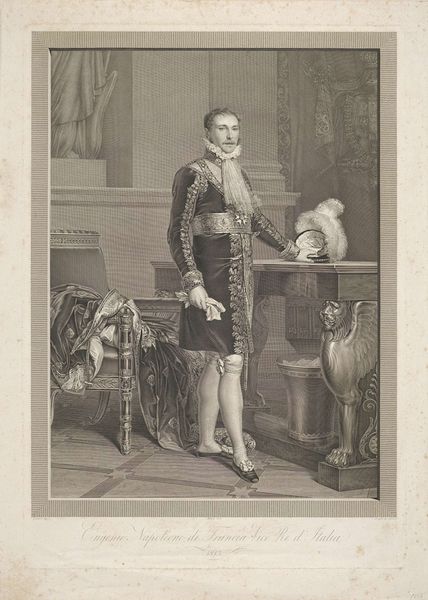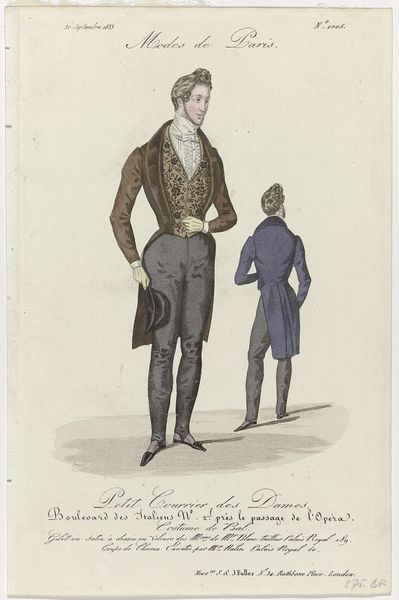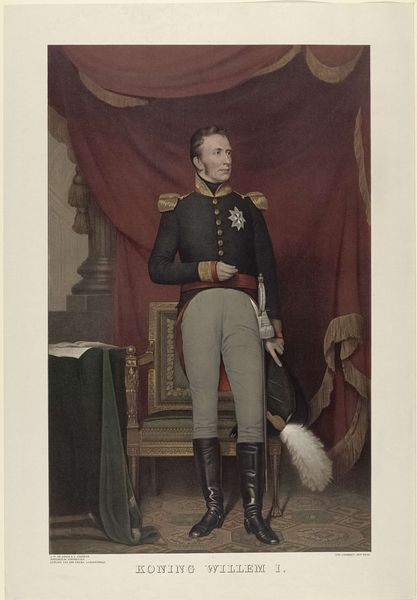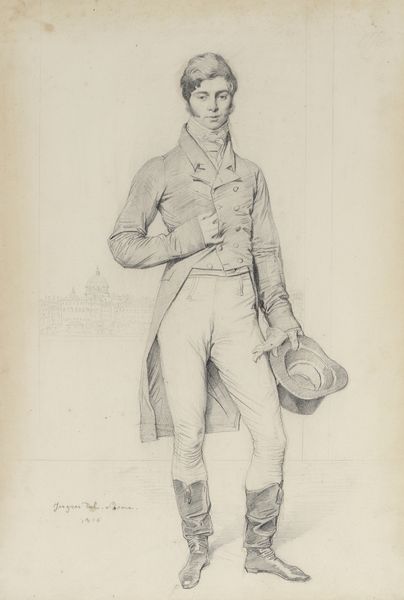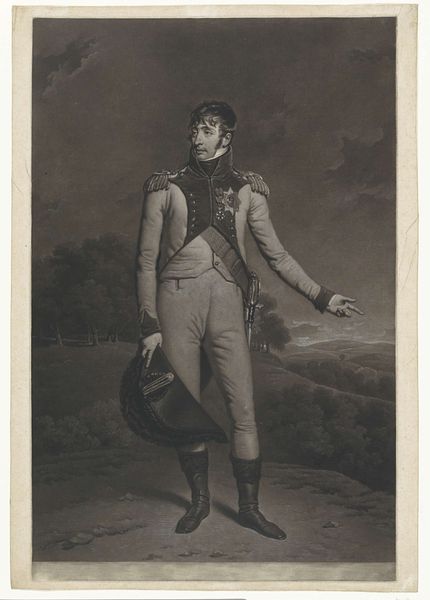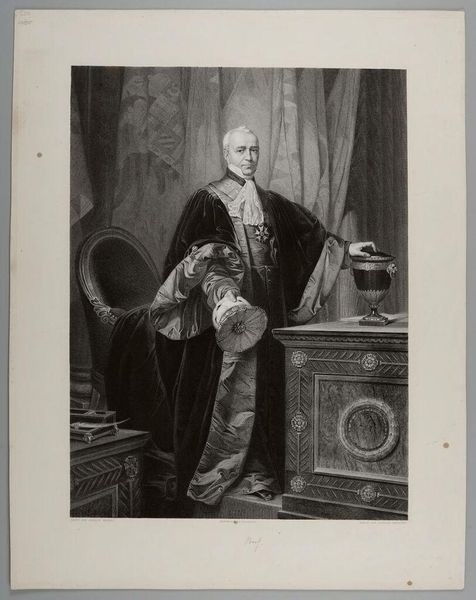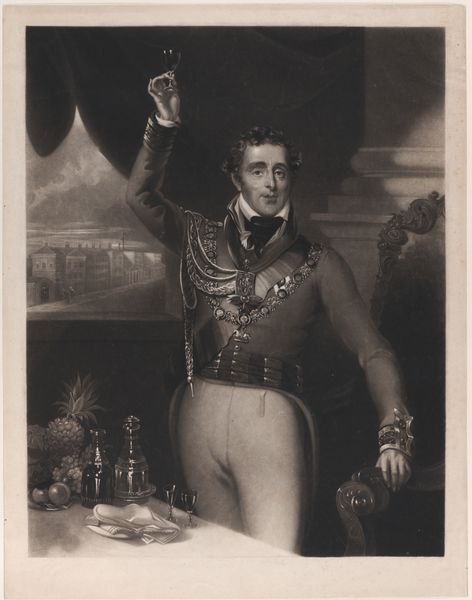
graphite, engraving
#
portrait
#
pencil drawn
#
pencil sketch
#
charcoal drawing
#
pencil drawing
#
graphite
#
history-painting
#
graphite
#
engraving
#
realism
Dimensions: height 778 mm, width 557 mm
Copyright: Rijks Museum: Open Domain
Curator: Before us we have a work entitled “Portret van Arthur Wellesley, hertog van Wellington,” or "Portrait of Arthur Wellesley, Duke of Wellington," possibly created in 1818 by William Bromley the First. It appears to be crafted with graphite and engraving techniques. What's your initial take? Editor: Immediately, I’m drawn to the textural contrast. Look at the sheen on his boots versus the dull matte finish on his coat. The piece strikes me as trying to portray immense power, maybe even wealth, and yet, it’s using some humble materials like graphite, or perhaps charcoal. Curator: The composition employs a classical structure: The figure stands framed by an archway, leading the eye towards a distant architectural vista. This arrangement clearly signifies not just nobility, but also authority and grand scale, invoking familiar tropes of power. Editor: Absolutely, but let’s think about what’s in Wellington’s hand. Is that a symbol of battle or of status? The sword in his grip contrasts sharply with the decorative helmet he also clutches. This seems less a celebration of inherent nobility, and more a document of constructed power—power acquired in his labor and then solidified into cultural symbols. Curator: Note, however, how Bromley renders the textures. The meticulous detailing in the drapery and architectural background, against the figure's smooth visage, establishes an important visual hierarchy, perhaps emphasizing intellect over brute force, suggesting that effective leadership requires calculation and restraint. Editor: Right. And someone had to *make* the paper. Someone had to sharpen the graphite. Someone had to pull the engraving. I would really be interested in tracking who was involved in those labor chains in Britain in 1818 and how many hands were on deck. It wasn't one individual working alone. That interests me more than the compositional devices on view here. Curator: While material realities indeed shaped production, let us remember Bromley’s mastery of line and form. Observe, for example, how the soft rendering of the face contrasts sharply with the defined metallic textures. These carefully curated contrasts contribute profoundly to the image’s semiotic density. Editor: Of course, this highlights class difference and social access but I find myself wanting to move away from Wellington himself to consider all the anonymous makers in service of this heroic image. Curator: It has been quite intriguing to observe how disparate aesthetic dimensions merge within Bromley’s creation. Editor: Agreed. From different points of view, certainly something worth continuing to think about.
Comments
No comments
Be the first to comment and join the conversation on the ultimate creative platform.
